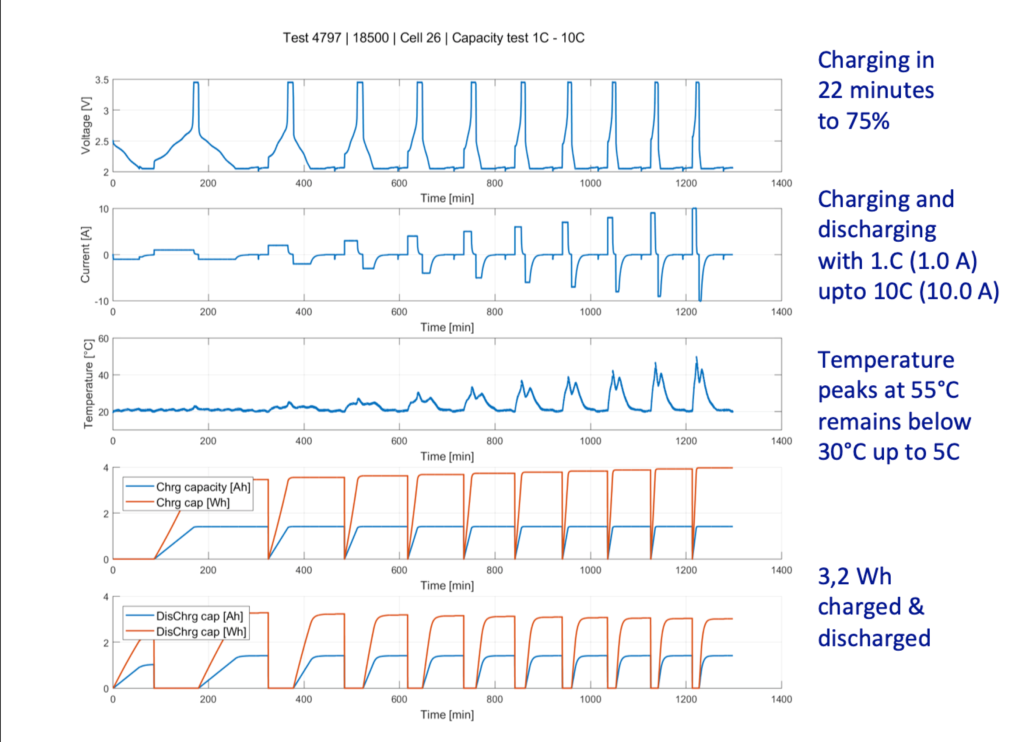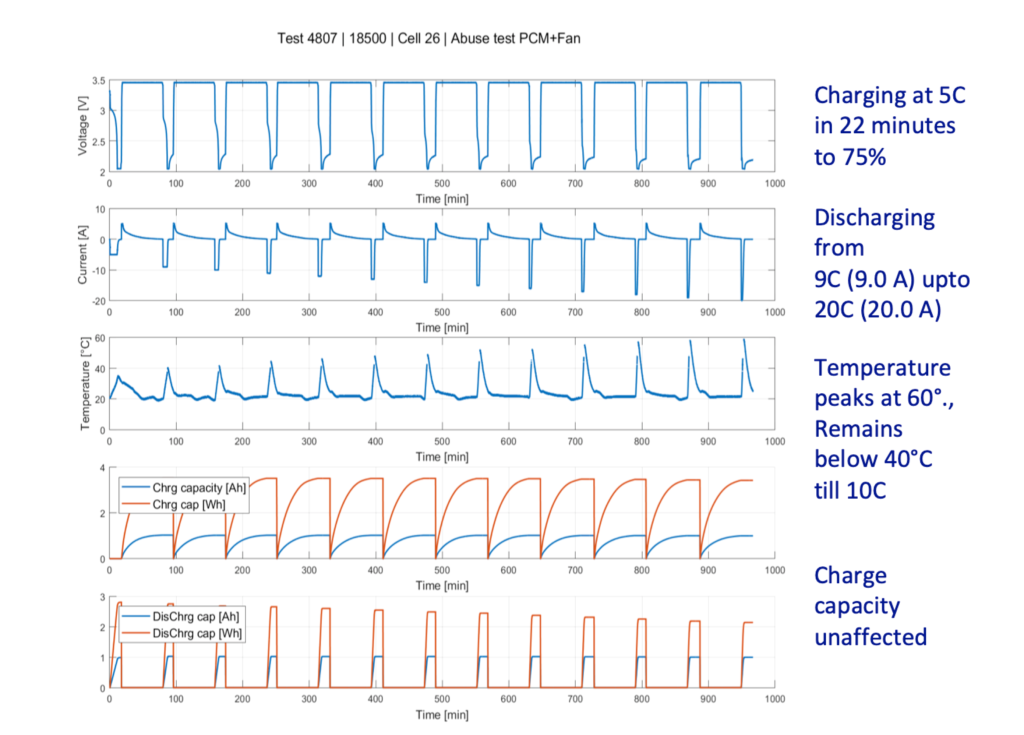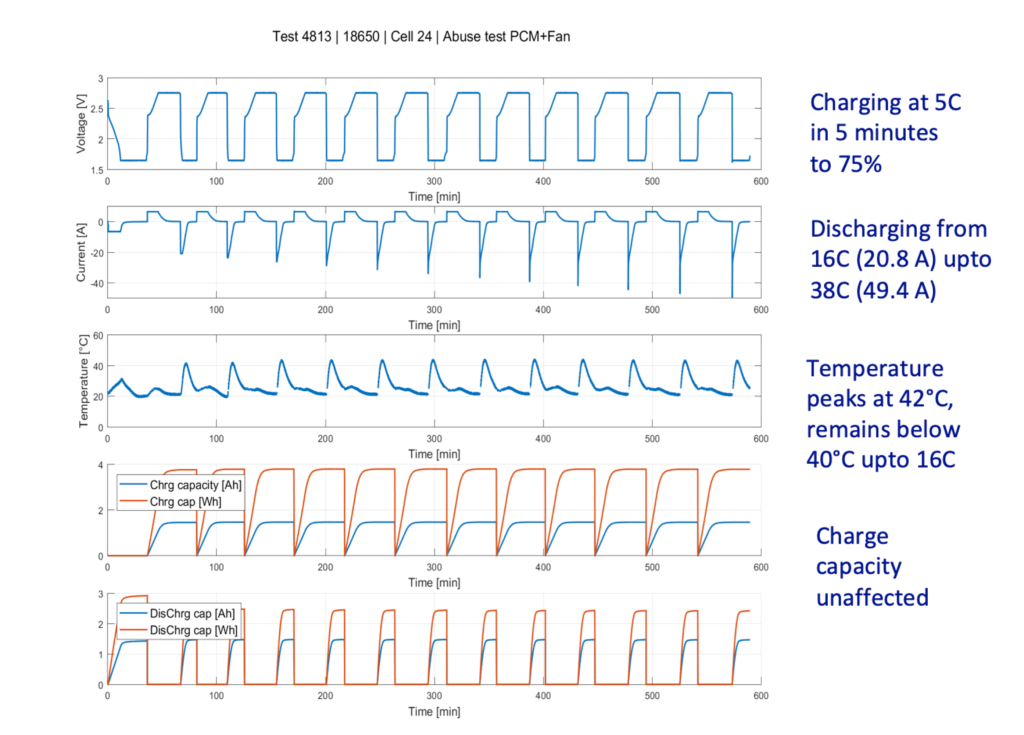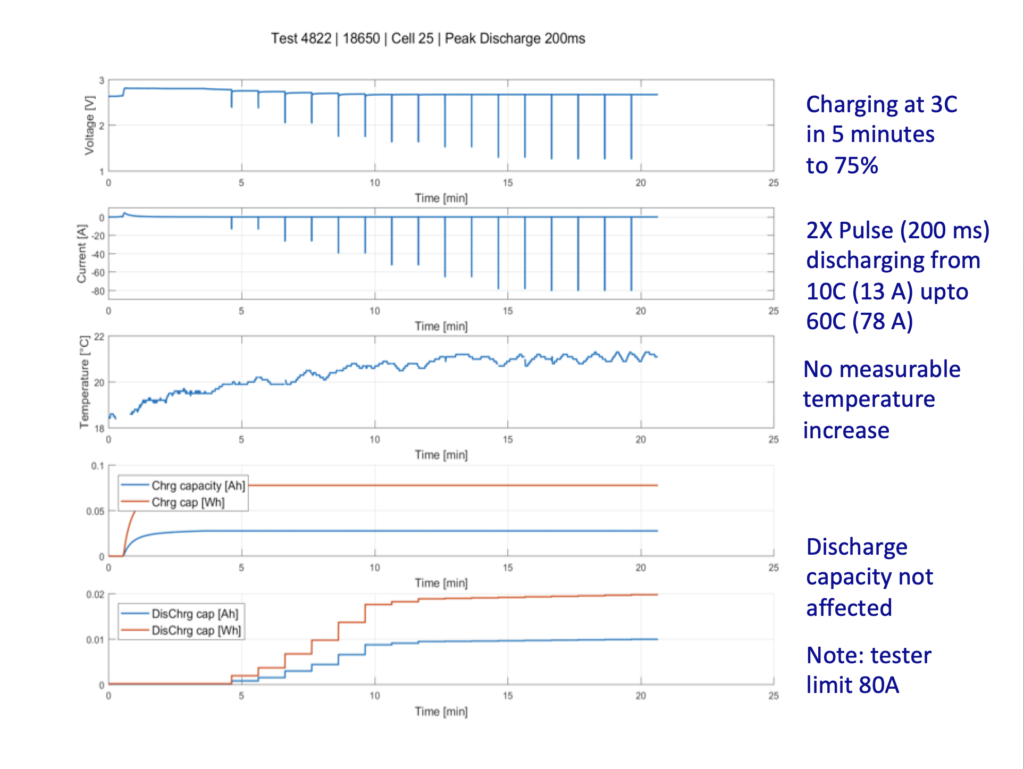How robust are blue cell power capacitors?
You only know this when you test them beyond the specifications of the datasheet. While the full test report is being prepared, hereby a few early test results.
The main stress and abuse tests are as follows:
- Charging and discharging the cells from 1C to the maximum C-rate specified. The cells are placed in the air at room temperature.
- Charging and discharging the cells to the maximum C-rate that the test set-up can handle. The cells are placed in a heat absorbing foam with a fan maintaining the airflow in the room.
- Charging at 5C and then discharging with 200 millisecond pulses up to the maximum that the test set-up can handle.
After this series of tests, the cells were recharged to see if there was any capacitance loss. No loss was observed. These stress and abuse tests fully confirm the unprecedented robustness and reliability of carbon based power capacitors.
See also tow other postings:
- Short report on the test set-up at Flanders Make labs
- Stress tests based on a simulated WLTP profile.
- Stress test using 6 seconds pulse at maximum C-ratings.
First test.
We test some 18500 and 18650 cells by charging them at 5C and then discharging them with 1C upto 10C (for 18500) and from 2C to 20C (for 18500). For the 18500 cells 1C = 1Ah, for the 18650 cells 1C = 1.3 Ah. The test setup is as follows:
- The cel is placed in the (airconditioned) room at about 22-24 °C. No extra cooling.
- The test terminates if the cell discharges to its lowest voltage or if a maximum temperature is reached (the temperature is measured on the skin of the cell).
- The cells are charged at increasing C-rates up to the maximum allowed on the datasheet.
Below the graphs for a 18500 and a 18650 cell.


Second test.
Next we went beyond the maximum discharge current specifed on the datasheet. So this time from 9C to 20C (18500 cell), resp. 16C to 38C (18650 cell). This time we placed the cells in a heat absorbing foam and we used a ventilation fan (placed at about 1 m away).
Below the graphs for a 18500 and a 18650 cell:


Third test.
Finally, we abused the cells by subjecting them to very high discharging currents applied as two consecutive pulses of 200 millisconds. Hereby we reached the limits of the tester.


The full report will follow.

Recent Comments